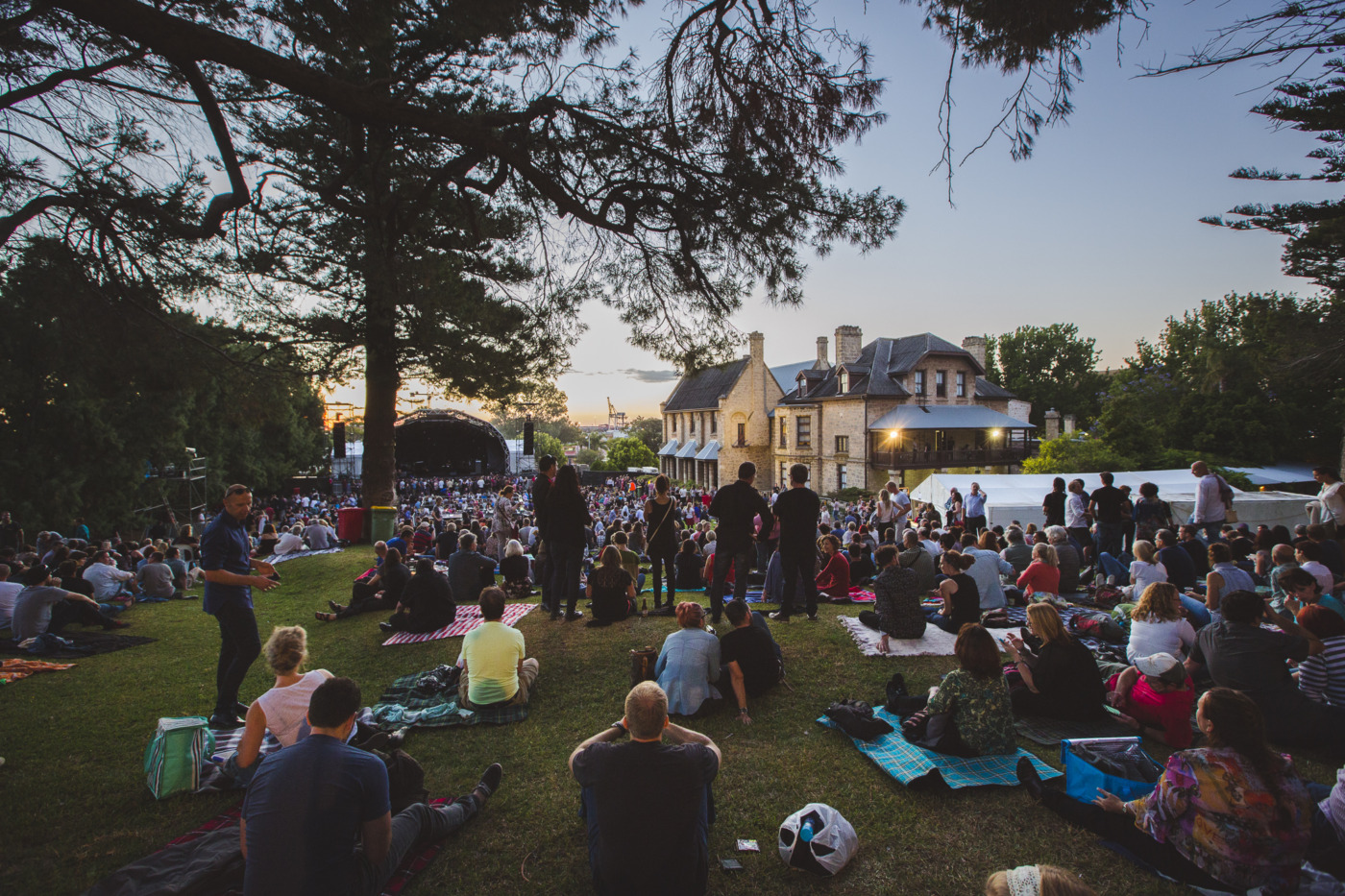Chinoiserie – the Western appropriation of Asian aesthetics – rose to prominence in eighteenth century at a time when the British Empire was exerting extraordinary dominance over the global market; effectively undercutting the original artisans and commodifying meaningful cultural artefacts.
Opening at Fremantle Arts Centre on 12 August, A Gentle Misinterpretation: Australian Artists and Chinoiserie is a contemporary exploration of this problematic practice, presenting thirteen artists whose works reflect on notions of cultural thievery, colonisation, exoticisation, and excess.
Conceived and curated by Andrew Nicholls, the exhibition is the culmination of a seven-year research and development project, including residencies at Brighton’s Royal Pavilion, (the seaside pleasure palace of George IV and the world’s most spectacular remaining example of Chinoiserie architecture), and The Pottery Workshop in Jingdezhen, China.

Tanija and Graham Carr, Chinoiserie Group (detail), 2017-2022, leather, stained finish, 170 x 60 x 70cm. Photography by Victor France. Image courtesy the artists
Including several new commissions produced during the residencies alongside existing works, A Gentle Misinterpretation features Abdul Abdullah, Casey Ayres, Nathan Beard, Sandra Black, Tanija and Graham Carr, David Charles Collins, Theo Costantino, Susan Flavell, Tarryn Gill, Pilar Mata Dupont, Cherish Marrington and Andrew Nicholls. The exhibition also includes works produced in collaboration with artists from Jingdezhen, China, residents of Brighton, UK and Perth-based classical music collective HIP Company.
Named after the comments of Robert Copeland, an ancestor of one of the UK’s most iconic China dynasties, who described Chinoiserie as ‘a gentle misinterpretation’ of Chinese culture, the exhibition is an opulent, sensual and comedic exploration of one of Western culture’s most fascinating aesthetic curiosities.
“A Gentle Misinterpretation is a real passion project for me,” says the exhibition’s curator and exhibiting artist Andrew Nicholls. “In my practice, I like to explore antiquated and historical art forms through a contemporary lens, highlighting some of the broader historical context that informs them.”
Varying in medium, scale and approach, the exhibiting artists engage with Chinoiserie from a multitude of angles. Some have referenced the opulence and excess of the Chinoiserie genre and George IV’s notorious decadence, others have interpreted the broader themes of colonialism and cultural thievery, or the nuanced relationships to their own cultural heritage and ties to the region.

Abdul Abdullah, Dispossessed (detail), 2015, digital video 2 minutes 13 seconds (with credits and soundtrack)
Thai-Australian artist Nathan Beard is exhibiting a series of porcelain vases cast by Jingdezhen artisans and featuring hand-painting by cobalt master Yu Xuan. These collaborative works reinterpret scenes from the Kachin region of Myanmar (a country bordering China and Thailand) in the style of traditional Chinese porcelain art, reflecting multiple layers of cross-cultural and colonial scrutiny.
Shot in the Royal Pavilion’s Music Room, Abdul Abdullah’s lavish video work Dispossession features Abdullah and Brighton-based actress Sidonie Bond, performing a scene from Shakespeare’s The Tempest. Abdullah plays the slave Caliban, a character he has portrayed in numerous self-portraits in recent years, while Bond is Miranda, his oppressor – offering a new lens on this storied power dynamic within a space loaded with imperialist history.
Interrogating George IV’s excessive lifestyle, Tarryn Gill’s Surely This is Death is an installation based upon satirical cartoons mocking George’s penchant for overeating and his taste for the exotic, while Pilar Mata Dupont’s sound installation, which can be encountered throughout the exhibition, draws on correspondence, financial and medical documentation relating to George’s lifestyle, spending and health.
Andrew Nicholls is presenting a series of porcelain objects including A Gentle Misinterpretation, a collection of recycled and repurposed vintage dinnerware. Adorned with Blue Willow – the most enduring example of Chinoiserie, designed in the UK – the works demonstrate the pervasive nature of Britain’s China production, which was so effective that Asian ceramicists were forced to copy the design.
In a nod to George IV’s substantial legacy of arts patronage, the various residency outcomes are complemented by commissioned objects from some of Western Australia’s senior-most craft makers, including Sandra Black and Susan Flavell, and Tanija and Graham Carr, whose works draw inspiration from Asian aesthetics.
According to Glenn Iseger-Pilkington, Curator Visual Arts at Fremantle Arts Centre, “Hidden behind Chinoiserie’s aesthetic charm is a much darker narrative of dispossession and cultural thievery, practices of erasure on which empires are built, and histories are rendered.”
“A generous and insightful exhibition which explores aesthetic legacies, A Gentle Misinterpretation prompts us to question the euro-centric gaze and to remain curious about the provenance of cultural artefacts, symbols and visual languages. The exhibition is a timely reminder that the cultural work we do today leaves a legacy and a narrative for future minds to explore and critique, and to truth-tell around.”
A Gentle Misinterpretation: Australian Artists and Chinoiserie opens 6:30pm Friday 12 August alongside Jila Kujarra: Two Snakes Dreaming and Tania Ferrier: Pop Porn. The exhibitions will be open daily until Sunday 23 October.
A series of public programs will run in conjunction with the exhibition, including Disclosure: Beg Borrow and Steal with Andrew Nicholls on Tuesday 30 August.
For interviews or further information please contact Media Officer Rosamund Brennan via [email protected] or +61 (8) 9432 9565
Hero image: Andrew Nicholls and Jingdezhen artisans, Untitled (Cobalt Skull #1), hand-painted cobalt on porcelain, dimensions variable. Cobalt painting by Yu Xuan, 2016. Photography by Bewley Shaylor.

